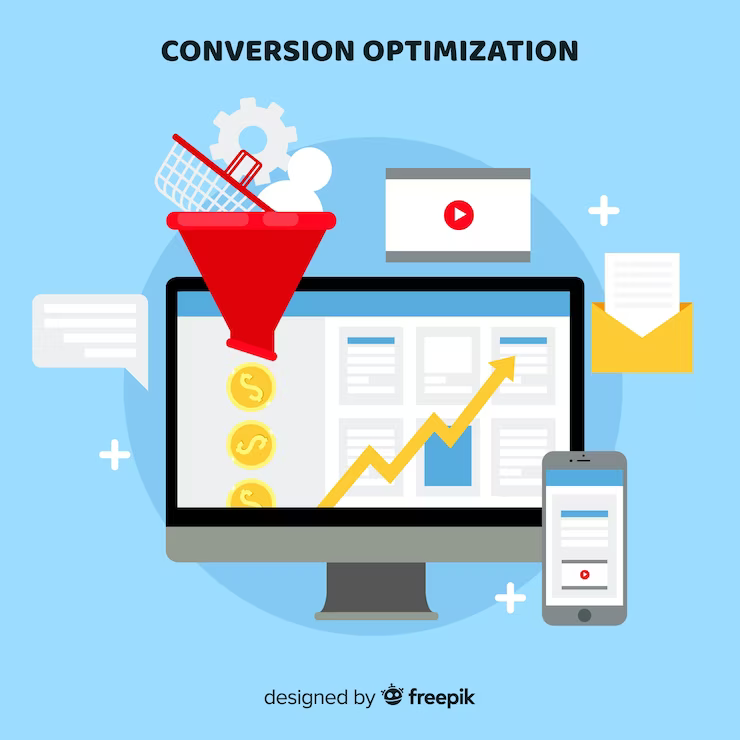
Conversion Optimization
Conversion optimization services refers to increasing conversions by optimizing a website, landing page, or marketing campaign. Conversions are actions a user takes to fulfill a marketing message or purchase.
Conversion optimization is identifying areas on a website or campaign that might hinder users from taking desired actions. Then, make improvements to improve the user experience to increase conversion rates.
There are many strategies you can use to maximize conversions. Each business’s needs and goals will determine which plan is best. Some standard techniques include:
1. A/B Testing: This involves creating two versions of a website or marketing message and comparing them to determine which version converts more. You can test headlines, images, and calls to action to find which resonates most with users.
2. Optimizing the user experience: This refers to making a website or landing page easier and more intuitive for visitors. This could include simplifying the design, speeding up loading times, or changing the layout to highlight key information.
3. Personalization: This is the ability to tailor the user experience to meet the needs and interests of each individual. This could involve using data like browsing history and location to display personalized content, offers, or dynamic range to show different messages based on user behaviour.
4. Retargeting is showing targeted ads to users who have visited a website or received a marketing message. This helps businesses stay top of mind and encourages users to return to complete the desired action.
Effective conversion optimization requires understanding your target audience’s needs and behaviour and testing and iterating until you find the best strategies for your business. Businesses can improve the user experience and make it easier for users to convert by focusing on increasing the effectiveness of their marketing campaigns. This will help them drive more revenue and grow.
Frequently Asked Questions
The time it takes to see results from conversion optimization efforts will vary depending on which strategies are used and how complex the marketing campaign or website is. Businesses can see some improvements in weeks or months after implementing changes. However, as they refine and optimize their approach, significant gains will be seen over time.
There are many metrics that can measure the success or failure of conversion optimization efforts. These vary depending on the business goals. Common metrics include:
• Conversion rate (the percentage of users who take the desired action).
• Bounce (the percentage who leave a site without taking any action).
• Time on site.
Revenue generated from conversions is also a common metric.
It is easy to get too focused on the short-term and pay attention to the long-term effects of user experience. This is a common error. It is important to ensure that changes to websites or marketing campaigns align with the interests and needs of your target audience and don’t impact the overall user experience. It is a common mistake to make too many changes at one time. This can lead to confusion and inefficiency, as it can be difficult to determine the impact of each change.
Businesses should constantly test and improve their conversion optimization strategies. Monitoring metrics and identifying improvement areas can help you to identify and test new strategies and tactics that work best for your target audience. Businesses can improve conversions and grow by focusing on users’ needs and interests and continuously refining their approach.

